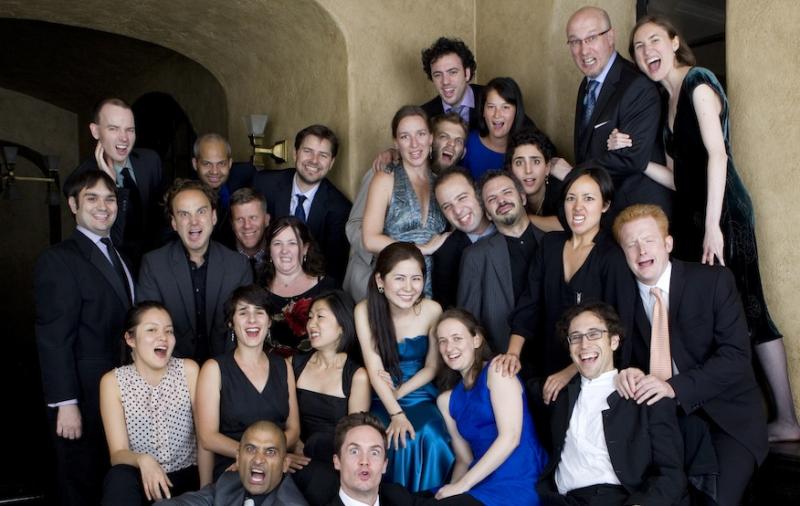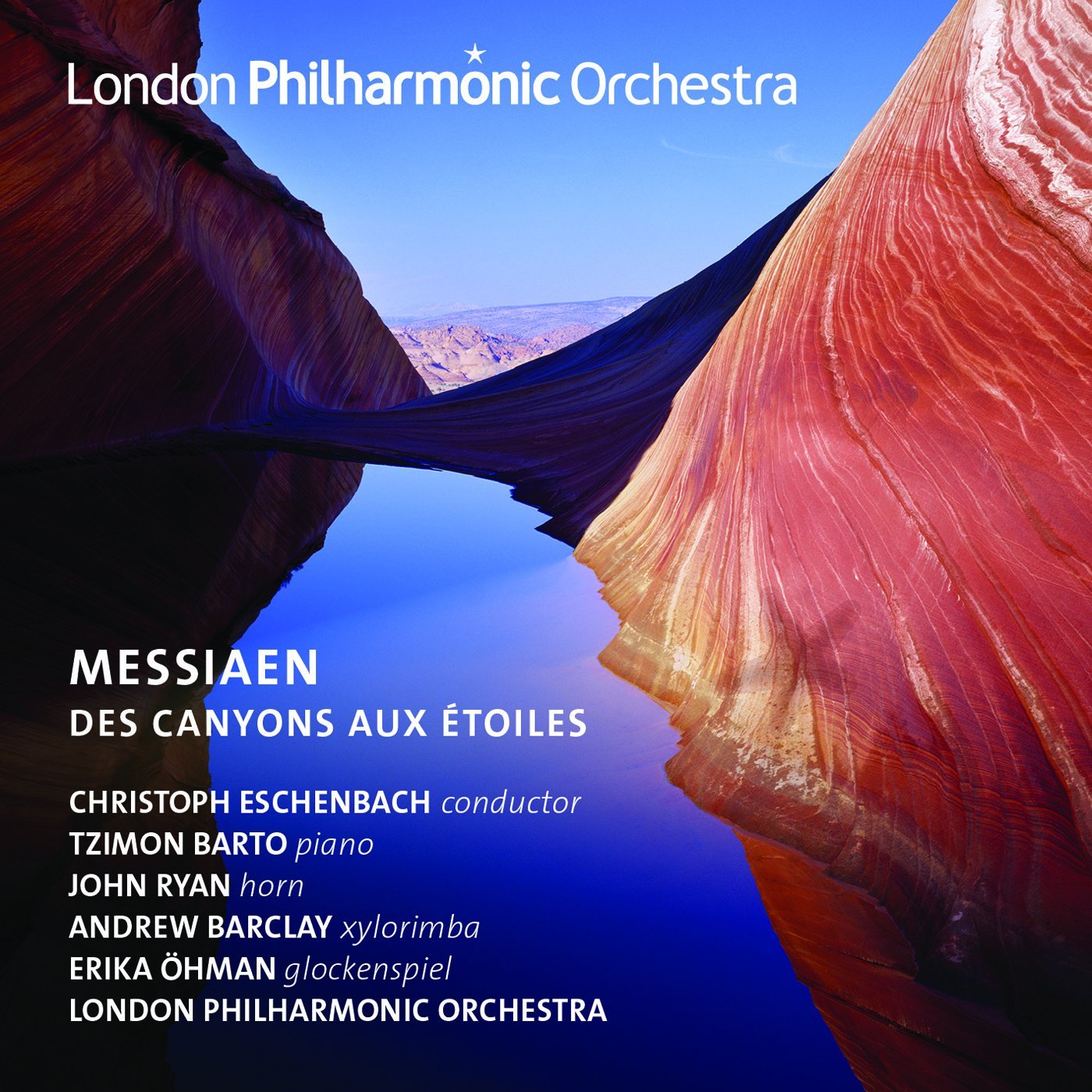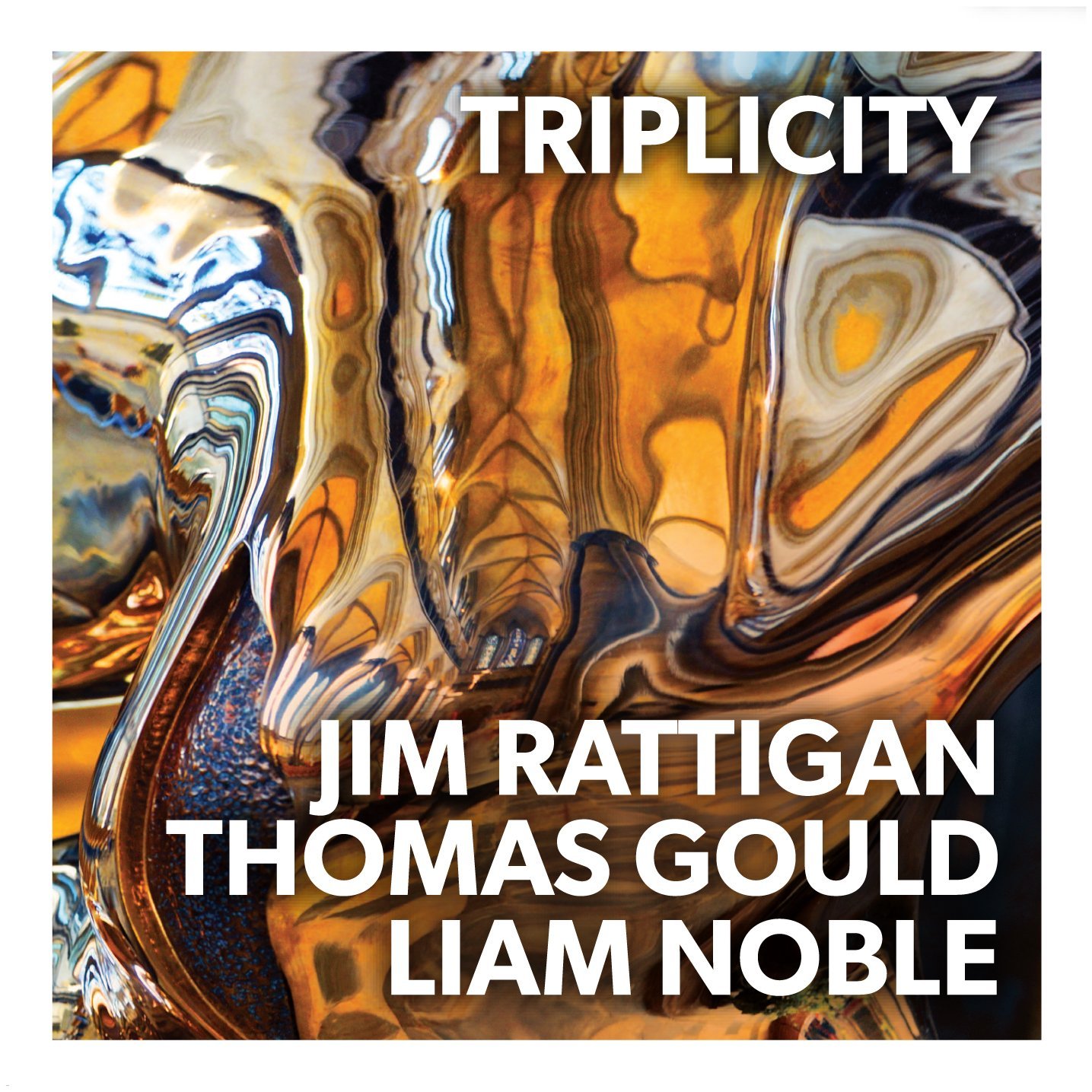Classical CDs Weekly: Messiaen, The Knights, Jim Rattigan | reviews, news & interviews
Classical CDs Weekly: Messiaen, The Knights, Jim Rattigan
Classical CDs Weekly: Messiaen, The Knights, Jim Rattigan
Awe-inspiring noises from a French giant, snappy sounds from a young chamber orchestra and mellow music for horn trio

 Messiaen: Des canyons aux étoiles London Philharmonic Orchestra/Christoph Eschenbach (LPO)
Messiaen: Des canyons aux étoiles London Philharmonic Orchestra/Christoph Eschenbach (LPO)
Olivier Messiaen's Turangalîla-Symphonie is almost a repertoire work, but performances of Des canyons aux étoiles are rarer. Any new recording is a cause for celebration, and this live one is a wowzer. Messiaen had been asked to write a large-scale work for the United States bicentenary, a commission which gave him the chance to visit the spectacular Bryce Canyon in Utah. Its geology and birdsong fill the piece, a vast 12-movement work which sounds like a summation of Messiaen's career. Newcomers should read Alex Ross's lucid chapter on Messiaen in The Rest Is Noise; no writer has ever demystified this potentially forbidding music so well. Fiendish concertante piano writing, brilliantly transcribed birdsong and thunderous brass chorales all make an appearance. Percussion buffs will listen out for the rarely heard geophone, a large drum filled with lead pellets which creates a satisfying earthy scrape. Messiaen's widow Yvonne Loriod recalled collecting the prototype by car in New York, describing the “splendid crescendo” heard when driving round sharp corners.
Extravagant orchestral forces are used with enormous subtlety. The louder climaxes are deafening but much of the work is translucently, delicately scored. Christoph Eschenbach's London Philharmonic Orchestra play superbly, and the close recording lets us hear every woodwind squawk with piercing clarity. Tzimon Barto finds poetry and percussion in the solo piano role. Principal horn John Ryan stuns in the “Appel interstellaire”, one of the greatest orchestral horn solos. There's soft string playing to die for in the exquisite eighth movement. The work's ending gets me every time; Messiaen's thrillingly bright, blazing apotheosis uniquely uplifting. Disappointingly, the LPO's bass trombonist isn't named, but percussionists Andrew Barclay and Erika Öhman get a well-deserved credit. An excellent, reasonably priced introduction to a masterpiece. Cool cover photo too.
 The Knights: the ground beneath our feet (Warner Classics)
The Knights: the ground beneath our feet (Warner Classics)
The Knights are a conductorless "orchestral collective, flexible in size and repertory" from Brooklyn. This being 2015, their website includes a rather dutiful Mission Statement, suggesting that their music making might be just a little worthy and pedestrian. It isn't, of course, and this is an exuberant, invigorating anthology. Billed as "a celebration of the concerto grosso", one of its selling points is a wonderfully sharp and witty performance of Stravinsky's Concerto in E-flat. Look at the recording details and you'll discover that this Dumbarton Oaks comes live from Dumbarton Oaks, the house in Washington D.C. which hosted the piece's premiere in 1937. Stravinsky's engaging update of a Bach Brandenburg Concerto makes an apt centrepiece for a programme which includes a warmly stylish reading of Bach's C minor Concerto for Violin and Oboe, plus Steve Reich's sublime Duet for Two Violins and Strings. Baroque motor rhythms fuel Stravinsky's outer movements, while the calm stasis in the Allegretto looks forward to Minimalism. Soloists are drawn from the orchestra, and they're consistently good, especially Ariana Kim and Guillaume Pirard in the Reich.
We get the Concerto for Santur and Violin devised by violinist Colin Jacobsen and santur-player Siamak Aghari. The santur is an ancient Persian hammered dulcimer, and its idiosyncratic tuning initially clashes uncomfortably with the homogenised sonorities of Jacobsen's orchestra, though the two worlds marry more successfully later in the work. Best of all is the last movement, where Aghari's vocal entry provides a wonderful coup de théâtre. The CD closes with ...the ground beneath our feet..., the ground in question a syncopated bass line take from Baroque composer Tarquinio Merula's Ciaccona. Composed collectively by six members of the group, it’s a blast. There's a joyously incongruous salsa interlude before violinist Christina Courtin suddenly and unexpectedly starts belting out her song “Fade Away”. Amazingly it works, providing an appropriately cheery end to an invigorating, exciting disc.
 Jim Rattigan: Triplicity Jim Rattigan (horn), Thomas Gould (violin), Liam Noble (piano) (Pavillion)
Jim Rattigan: Triplicity Jim Rattigan (horn), Thomas Gould (violin), Liam Noble (piano) (Pavillion)
Horn, violin and piano. No - not the Brahms Trio, but Jim Rattigan's latest album. It's a mystery as to why the horn has never taken off as a jazz brass instrument – presumably this is to do with a backward-facing bell, meaning it has less punch than a trumpet or trombone. Horns have been used effectively to add colour in larger ensembles; Gil Evans and Stan Kenton made good use of them, and the Los Angeles-based horn-player John Graas enjoyed a successful solo career before his premature death in 1962. Rattigan is well known as a session musician and also spent six years in the RPO. He's a superb player; the first few seconds of the opening track “Jacaranda” is unbelievably free and flexible. You'd happily listen to Rattigan blowing long notes for a few hours. His tunes are fabulous, and he's given magnificent, intelligent support by the Aurora Orchestra's Thomas Gould and pianist Liam Noble. It's jazz, but also exquisite chamber music, something that you hope Brahms would approve of. A few seconds of Gould and Rattigan duetting in “Jessica” should convince. Or the opening of “Sweet Tamarind”, where Gould's swoops and slides are neatly matched by soft, bluesy horn.
Rattigan's fast playing is remarkable, as is demonstrated in “Off the Rails” and “Zerene”, but the overriding impression is of a master melodist, revelling in his instrument's unmatched ability to sing. A charmer of an album, closing with a beautiful legato waltz. Funky sleeve art, warm recorded sound but, sadly, no notes on the music; it would have been nice to read about how this spontaneous-sounding album was rehearsed and recorded.
Explore topics
Share this article
The future of Arts Journalism
You can stop theartsdesk.com closing!
We urgently need financing to survive. Our fundraising drive has thus far raised £49,000 but we need to reach £100,000 or we will be forced to close. Please contribute here: https://gofund.me/c3f6033d
And if you can forward this information to anyone who might assist, we’d be grateful.

Subscribe to theartsdesk.com
Thank you for continuing to read our work on theartsdesk.com. For unlimited access to every article in its entirety, including our archive of more than 15,000 pieces, we're asking for £5 per month or £40 per year. We feel it's a very good deal, and hope you do too.
To take a subscription now simply click here.
And if you're looking for that extra gift for a friend or family member, why not treat them to a theartsdesk.com gift subscription?
more Classical music
 Hallé John Adams festival, Bridgewater Hall / RNCM, Manchester review - standing ovations for today's music
From 1980 to 2025 with the West Coast’s pied piper and his eager following
Hallé John Adams festival, Bridgewater Hall / RNCM, Manchester review - standing ovations for today's music
From 1980 to 2025 with the West Coast’s pied piper and his eager following
 Kaploukhii, Greenwich Chamber Orchestra, Cutts, St James's Piccadilly review - promising young pianist
A robust and assertive Beethoven concerto suggests a player to follow
Kaploukhii, Greenwich Chamber Orchestra, Cutts, St James's Piccadilly review - promising young pianist
A robust and assertive Beethoven concerto suggests a player to follow
 Robin Holloway: Music's Odyssey review - lessons in composition
Broad and idiosyncratic survey of classical music is insightful but slightly indigestible
Robin Holloway: Music's Odyssey review - lessons in composition
Broad and idiosyncratic survey of classical music is insightful but slightly indigestible
 Classical CDs: Wolf-pelts, clowns and social realism
British ballet scores, 19th century cello works and contemporary piano etudes
Classical CDs: Wolf-pelts, clowns and social realism
British ballet scores, 19th century cello works and contemporary piano etudes
 Bizet in 150th anniversary year: rich and rare French offerings from Palazzetto Bru Zane
Specialists in French romantic music unveil a treasure trove both live and on disc
Bizet in 150th anniversary year: rich and rare French offerings from Palazzetto Bru Zane
Specialists in French romantic music unveil a treasure trove both live and on disc
 Scottish Chamber Orchestra, Ibragimova, Queen’s Hall, Edinburgh review - rarities, novelties and drumrolls
A pity the SCO didn't pick a better showcase for a shining guest artist
Scottish Chamber Orchestra, Ibragimova, Queen’s Hall, Edinburgh review - rarities, novelties and drumrolls
A pity the SCO didn't pick a better showcase for a shining guest artist
 Kilsby, Parkes, Sinfonia of London, Wilson, Barbican review - string things zing and sing in expert hands
British masterpieces for strings plus other-worldly tenor and horn - and a muscular rarity
Kilsby, Parkes, Sinfonia of London, Wilson, Barbican review - string things zing and sing in expert hands
British masterpieces for strings plus other-worldly tenor and horn - and a muscular rarity
 From Historical to Hip-Hop, Classically Black Music Festival, Kings Place review - a cluster of impressive stars for the future
From quasi-Mozartian elegance to the gritty humour of a kitchen inspection
From Historical to Hip-Hop, Classically Black Music Festival, Kings Place review - a cluster of impressive stars for the future
From quasi-Mozartian elegance to the gritty humour of a kitchen inspection
 Shibe, LSO, Adès, Barbican review - gaudy and glorious new music alongside serene Sibelius
Adès’s passion makes persuasive case for the music he loves, both new and old
Shibe, LSO, Adès, Barbican review - gaudy and glorious new music alongside serene Sibelius
Adès’s passion makes persuasive case for the music he loves, both new and old
 Anja Mittermüller, Richard Fu, Wigmore Hall review - a glorious hall debut
The Austrian mezzo shines - at the age of 22
Anja Mittermüller, Richard Fu, Wigmore Hall review - a glorious hall debut
The Austrian mezzo shines - at the age of 22
 First Person: clarinettist Oliver Pashley on the new horizons of The Hermes Experiment's latest album
Compositions by members of this unusual quartet feature for the first time
First Person: clarinettist Oliver Pashley on the new horizons of The Hermes Experiment's latest album
Compositions by members of this unusual quartet feature for the first time

Add comment